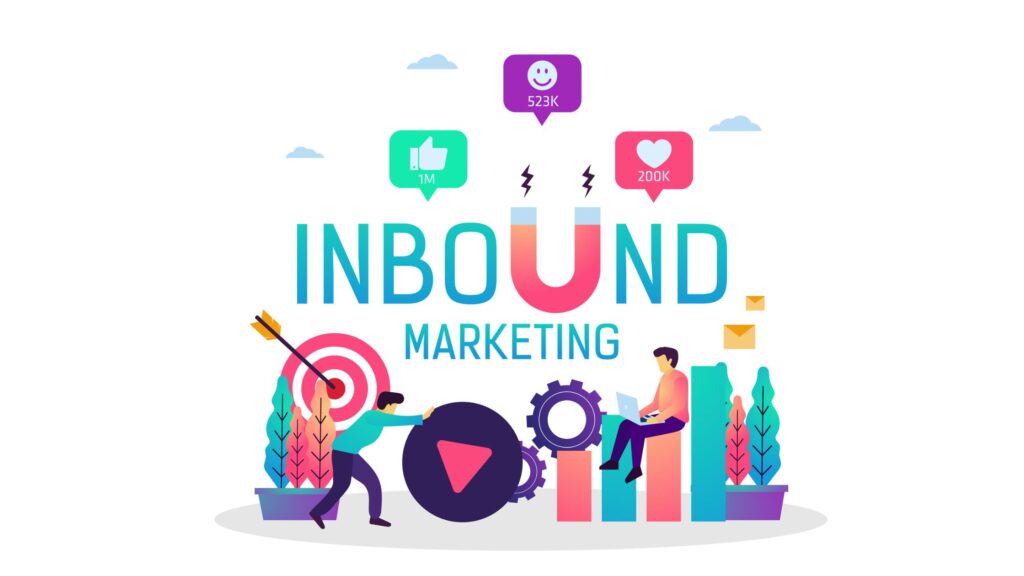Inbound Marketing: A Strategic Approach
Inbound marketing is a digital marketing strategy used to attract potential customers, generate qualified leads, and convert visitors into leads.
It is a combination of actions- right from crafting valuable content that appeals to your target audience, driving organic traffic from search engines, and social media posts to influencer marketing- everything falls under the scope of inbound marketing.
Various inbound marketing strategies such as content creation, content curation, search engine optimization (SEO), social media marketing, and email campaigns can be used to create and disseminate relevant content that appeals to your ideal customers or prospective customers.
What Is the Purpose of Inbound Marketing?
Business owners can harness inbound marketing to drive traffic and conversions without spending a lot of human and economic capital chasing potential buyers.
Inbound marketing reduces the need to go out and proactively seek new customers by allowing them to come to startups organically- thanks to the magic of valuable and helpful content. This strategy also helps increase customer trust, as more than 80 percent of customers conduct online research before deciding what to buy.
Inbound marketing is an effective way for startups to drive traffic and conversions. Targeting the right audience, generating organic traffic, and creating a digital marketing strategy are all essential components of successful inbound marketing.
Inbound marketing strategies include crafting content strategies that engage target audiences, utilizing conversion rate optimization tactics, and leveraging sales teams to reach potential customers. Ultimately, inbound marketing can help build brand recognition, grow trust between buyers and sellers, and increase conversions with minimal effort.
The Stages of Inbound Marketing

The inbound marketing process consists of four distinct stages- attract, convert, delight, and engage.
- Attract stage consists of utilizing social media posts and content on various platforms like blogs and search engines to bring visitors to your site.
- During the Convert stage strategies like sales funnels and digital marketing campaigns are deployed to turn these visitors into leads.
- The Delight stage focuses on nurturing the relationships you have built with your leads and customers by publishing unique content tailored specifically for them.
- Lastly, Engage is all about keeping those existing customers engaged by providing them with personalized experiences regularly through email campaigns or special offers based on their preferences.
10 Tactics for Your Inbound Marketing To Take Off!
Let us look at the top 10 ways for startups to utilize inbound marketing tactics to relentlessly chase and pursue growth!
1. Conduct In-Depth Interviews to Inform Your Inbound Marketing Efforts
Conducting in-depth interviews with current and prospective customers on a personal level allows you to gain insight into their thoughts and feelings about the product or service, as well as any pain points they might have.
This type of qualitative research is essential for understanding your target audience, refining your content strategy, and optimizing for long-tail keywords that will attract ideal customers.
2. Create and Share Compelling Content
The creation of high-quality content is a cornerstone of inbound marketing for startups.
Compelling content can be used to target potential customers, engage with them on social media posts and blogs, and ultimately convert visitors into qualified leads.
Content should also address customer pain points or provide useful advice or tips related to the products/services you offer.
Once you have created engaging content, it’s important to promote it across multiple social media platforms and through influencer marketing.
3. Write In-Depth Data-Driven Articles
Inbound marketing is all about reaching out to customers, and one of the most effective ways of doing this is by writing in-depth data-driven articles.
Long-form content has been proven to generate eight times more page views, nine times more leads, and three times more social media shares than short-form content.
By investing time into researching topics relevant to your industry and producing comprehensive articles that are supported by lots of data and analysis, you can position yourself as an authority in your field.
4. Use Facebook to Create a Target Persona
With the help of Facebook insights, you can create a target persona to better understand your potential customers. With this, you can gain insight into the age, gender, and interests of your target audience, thus enabling you to craft content that speaks directly to them.
By analyzing the demographics of your followers, you can use long-tail keywords in your blog posts or search engine optimization strategies to make sure you’re targeting the right people.
5. Use Storytelling in Your Content
Storytelling is one of the most powerful tools in a startup’s inbound marketing toolkit. It can help build an emotional connection with your audience, and it can be used to communicate complex ideas and messages in an engaging and memorable way.
In terms of content creation, this means creating articles and posts that tell a story rather than just presenting data or facts. You can focus on narrating customer experiences, telling your business’s story, or creating a compelling narrative around the challenges you solve.
6. Promote Your Content to Build Backlinks
Backlinks are essential for any successful inbound marketing strategy. Backlinks are the links from other websites that lead back to your website, and they indicate that your content is credible and of high quality. The more backlinks you have, the higher your page ranking on search engines such as Google will be.
You can increase the number of backlinks to your content by promoting it to relevant influencers and other websites.
7. Build Effective Email Campaigns
Through email campaigns, you can work on creating targeted messages to engage your target audience. Start by segmenting your email list according to customer profiles and interests. Then, craft content that speaks directly to their needs and connects with them emotionally.
Additionally, ensure you’re optimizing your emails for mobile devices by using responsive design. Finally, use A/B testing to determine what works best and track performance metrics like open rates and click-throughs.
8. Make Your Website Convert Like Crazy by Making it Mobile Friendly
Mobile users are three times more likely to convert than desktop users, so if you’re not making your website accessible for mobile, you’re missing out on potential leads and customers. To ensure high website conversion- make sure that it has a responsive design that works across all devices and platforms.
Additionally, create content specifically tailored for mobile users and optimize page load speeds by compressing images and other files whenever possible. By optimizing your site for mobile users, you will be able to generate higher-quality leads and customers from organic traffic.
9. Drive Conversions with Content Upgrades
Content upgrades are a powerful tool that can be used to optimize high-converting pieces of content.
For example, if you have an article about how to write more effectively, you could include a content upgrade in the form of a “700+ Power Word Cheat Sheet” for readers to download. This not only encourages them to sign up for your mailing list but also provides them with valuable information related to the topic they’re reading about.
10. Send Helpful Content to Subscribers
In order to keep your subscribers engaged and interested, it’s important to send them helpful content that they can’t get anywhere else. This could be blog posts, social media posts, and emails that provide valuable information for prospective customers.
By providing unique and relevant content, you are positioning yourself as an authority in the space and building trust with your audience.
With the right inbound marketing tactics, you can help increase website visits, build relationships with potential customers, generate qualified leads, and ultimately drive conversions. By using a variety of mediums- social media channels, direct mail, white papers, relevant keywords, educational content, visual content, and other promotional material, you have the real potential to convert your traffic into leads.
With effective inbound marketing, you can enhance the customer journey and delight customers while building a steady pipeline of both relevant traffic and quality traffic.
In conclusion, inbound marketing can be a powerful tool in building your brand and generating leads, but it requires a well-planned strategy and the right expertise to be successful. At Spinta Digital, we specialize in creating tailored inbound marketing strategies that are designed to drive traffic, build relationships, and ultimately convert leads into customers. If you’re looking to take your inbound marketing efforts to the next level, we’d love to work with you. Contact us today to learn more about our services and how we can help you achieve your marketing goals.



